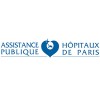
Use of Self-collected Vaginal Swabs as an Innovative Approach to Facilitate Testing for Repeat Chlamydia...
Chlamydia InfectionsThe purpose of this study is to determine if, among women who were treated for a prior chlamydial infection, home-based, self-collected vaginal swabs can increase rescreening for chlamydia in comparison with rescreening in the clinic. The study design is two randomized trials with enrollment at multiple family planning clinics and sexually transmitted disease (STD) clinics following a common protocol.

Nucleic Acid Amplification Tests (NAATs) for the Diagnosis of Pharyngeal and Rectal Chlamydia and...
Chlamydia InfectionsGonorrheaInvestigators at the University of Alabama in Birmingham in collaboration with investigators from the Centers for Disease Control in Atlanta are evaluating the performance of three commercial nucleic acid amplification tests for the detection of Chlamydia trachomatis and Neisseria gonorrhoeae in pharyngeal and rectal swab specimens. Cultures for C. trachomatis and N. gonorrhoeae are performed as additional reference tests. Study subjects are men and women attending sexually transmitted disease (STD) and HIV care clinics in Birmingham, Alabama, who report sexual behaviors that place them at risk for pharyngeal or rectal sexually transmitted infections.

Randomized Population-Based Study on Chlamydia Trachomatis Screening
Chlamydia TrachomatisInfertility1 more30,000 individuals living in Aarhus County, Denmark by Oct 1997 were randomized into two groups. The intervention group received an invitation to be tested for urogenital Chlamydia trachomatis by use of home-obtained and mailed sample (9,000 individuals). The control group received no intervention (21,000 individuals). Outcome measures: Number of tested individuals, number of detected infections, number of women developing PID, ectopic pregnancy or infertility, number of women giving birth to a child, number of women receiving IVF treatment and number of men developing epididymitis. The hypothesis was that more individuals would be tested and treated for infections and that number of long term fertility complications would decline in the intervention group compared to control group.

Community-Based Trial of Screening for Chlamydia Trachomatis to Prevent Pelvic Inflammatory Disease...
Pelvic Inflammatory DiseaseChlamydia InfectionsChlamydial infection is a common, sexually transmitted disease which women can have without knowing. Untreated, it can lead to an infection of the womb and fallopian tubes called pelvic inflammatory disease (PID), which can cause infertility. There has been only one trial of chlamydia screening and this was in American women in 1992 and used outdated tests. We now need to see if screening using modern tests and self-taken swabs works in a high risk, young, multiethnic female population in the United Kingdom (UK). The study is a randomised trial. It will involve asking women students in college bars to complete confidential questionnaires on sexual health and to provide self-administered vaginal swabs. We have successfully done this in a small pilot study. Participants will be told that the tests are for research purposes only and that if they think they may have been at risk of a sexually transmitted infection they should get checked at a clinic. If the trial shows that chlamydia screening using these new methods prevents PID, extending this community-based intervention nationwide could improve women's reproductive health and wellbeing and might prevent some women from becoming infertile

Pay-it-forward RCT for Gonorrhea and Chlamydia Testing
Gonorrhea MaleChlamydia;MThis is a randomized controlled trial which will evaluate dual gonorrhea/chlamydia test uptake and other outcomes in men who have sex with men (MSM) in three trial arms - 1) a pay-it-forward testing arm, 2) a pay-what-you-want testing arm, and 3) standard of care arm.

Detection of Chlamydia Trachomatis, Neisseria Gonorrhoeae and Mycoplasma Genitalium by Real-time...
Chlamydia Trachomatis InfectionNeisseria Gonorrheae Infection3 moreThis study aims to compare the sensitivity of detecting Chlamydia trachomatis, Neisseria gonorrhoeae and Mycoplasma genitalium by real-time multiplex PCR in a pooled analysis (i.e. gathering pharyngeal, anorectal and urinary samples) versus the standard of care (where a real-time multiplex PCR is made in each of the three samples).

Prevention of Diseases Induced by Chlamydia Trachomatis
Genital Chlamydia Trachomatis InfectionThe main objective of the study is to determine whether early screening and treating young women (<25 years of age) for genital Chlamydia Trachomatis (Ct) infection reduces the cumulative incidence of pelvic inflammatory disease (PID) over 24 months. As secondary objectives, the study aims To determine the baseline prevalence and the incidence of Ct infection; To improve knowledge on natural history of Ct infection in young women such as the rate and timing of progression to PID (at the beginning of the infection, at the end, throughout the course of infection), as well as the incidence of reinfections with Ct; To investigate the relation between host immuno-genetic factors and the clearance, persistence and development of late complications (PID) as an explanation for the inter-individual heterogeneity in the susceptibility to and course of Ct infection.

Time to Eradication of Mycoplasma Genitalium and Chlamydia Trachomatis After Treatment Commenced...
UrethritisCervicitis2 moreThe purpose of this on-going study is to study the number of days after antibiotic treatment has commenced (due to infection caused by the sexually transmitted bacteria Chlamydia trachomatis (CT) and Mycoplasma genitalium(Mg)) it takes to be cured i.e to get a negative test result. The specimens are analyzed on first-catch-urine (men) or patient's self-obtained vaginal sample with quantitive nucleic acid amplification test(NAAT). A secondary aim is to detect macrolide resistant Mg-strains and study whether there are any emerging macrolide resistant Mg-strains after treatment with azithromycin. A third aim is to study whether the participating subjects are adherent to the study protocol meaning 12 samples taken during a period of four weeks.

Safety and Immunogenicity of a Chlamydia Vaccine CTH522
TrachomaThe present trial is a phase I, double-blind, parallel, randomised, and placebo-controlled trial of a chlamydia vaccine CTH522. Sixty-six subjects will be randomly assigned into six cohorts and are to receive four vaccination, in total of 12 trial visits. Cohorts A-D investigates CTH522-CAF01 administered IM in two doses (85 µg and 15 µg). Cohort E investigate CTH522-CAF09b also administered IM in one dose (85 µg). Cohort E is the placebo group. All subjects will receive a TO administration as a boost at Day 140 (4th vaccination). The TO boost will be non-adjuvanted CTH522 (12µg in each eye) or placebo. Nine subjects in each of cohorts A-E will receive the active boost (i.e. CTH522), three subjects will receive the placebo.

Check it: A New Approach to Controlling Chlamydia Transmission in Young People
Chlamydia Trachomatis InfectionGonorrheaThis study, named "Check it," is a bundled program for African American (AA) men ages 15-24 that includes community testing for chlamydia and gonorrhea, expedited treatment for subjects who test positive and their female sexual contacts, and rescreening for these two sexually transmitted infections.
